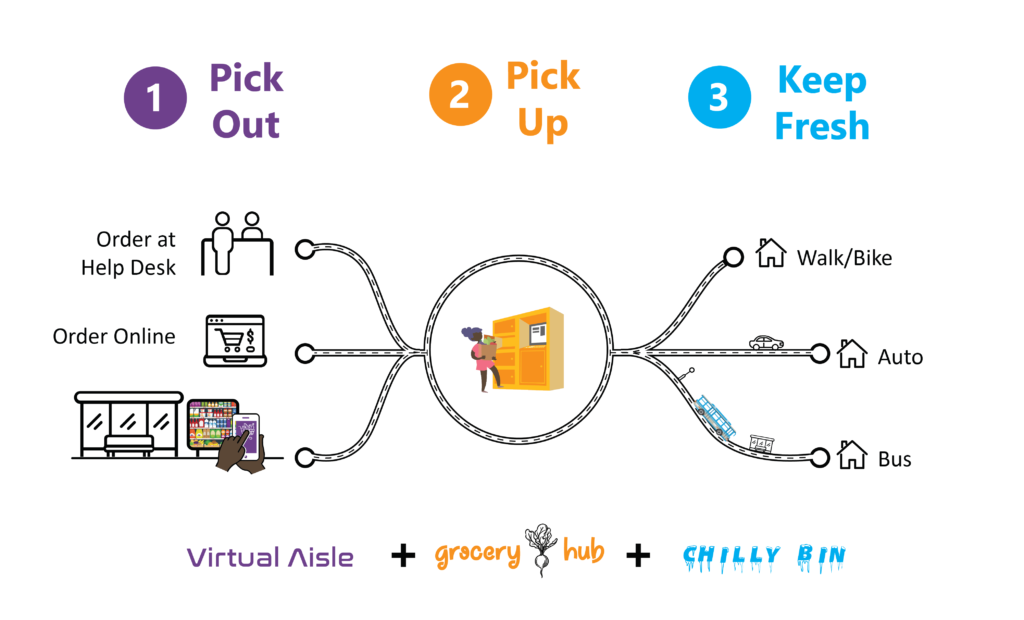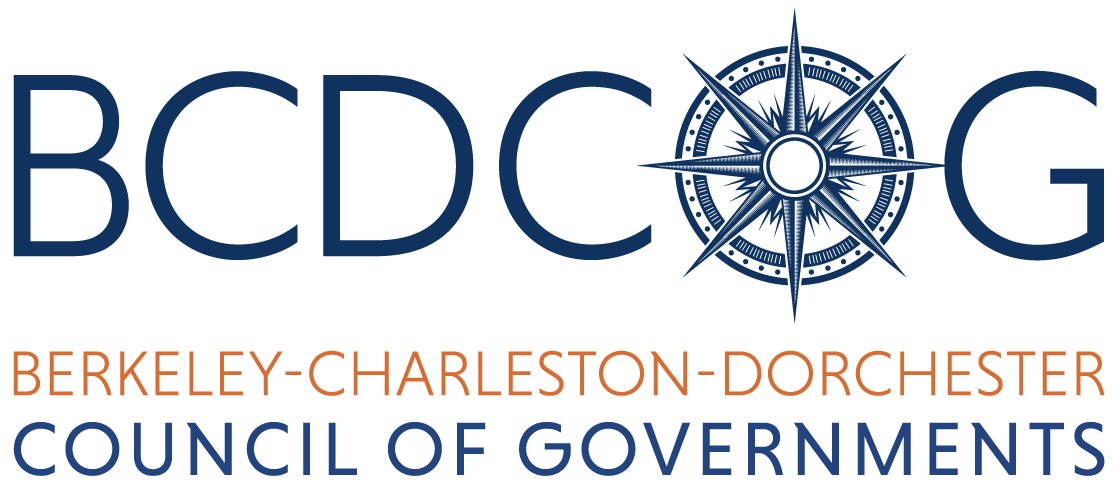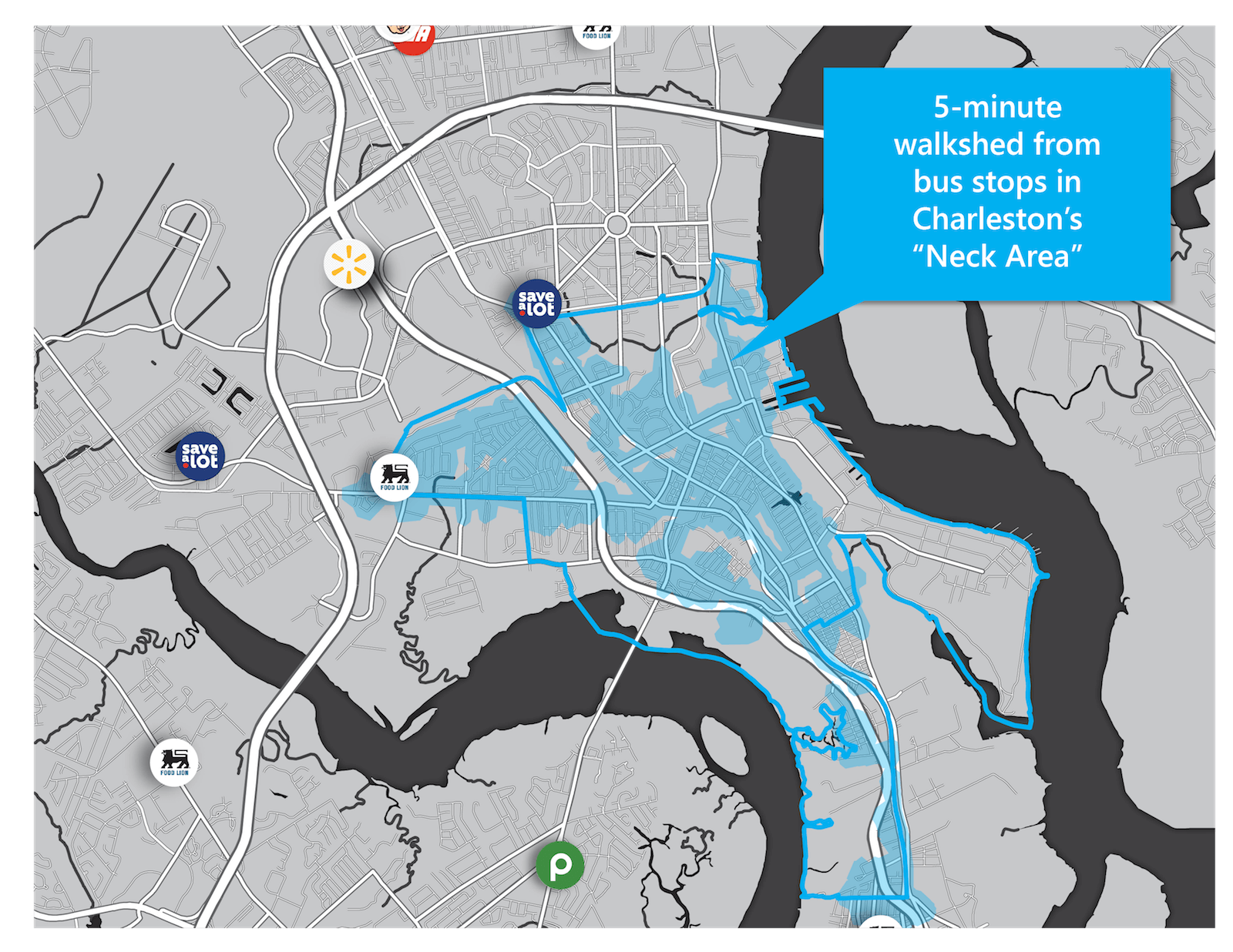Accessing Healthy Food In Charleston’s “Neck Area”
The Charleston “Neck Area” team was comprised of BCDCOG, the City of North Charleston, Lowcountry Food Bank, Metanoia Community Development Corporation, and the Joseph P. Riley Center for Livable Communities. As regional partners continue to try to attract a large-scale grocery chain to the study area, the project team studied short-term options for making healthy, affordable food more accessible to residents in Charleston’s “Neck Area”. The study was divided into three phases: idea generation, small-scale test, and a full-scale pilot.
Project Materials
Accessing Healthy Food in Charleston’s “Neck Area”, Phase I Report (forthcoming)
Phase I Survey Instrument
Phase I Survey Responses
Phase I - Idea Generation
During the study’s first phase, the team analyzed existing barriers to healthy food access in Charleston’s “Neck Area”, documented ongoing efforts to address healthy food access, generated and then vetted a list of potential alternatives through targeted community outreach, and selected a preferred alternative.
The loss of Winn Dixie in 2005 from the study area and the recent closure of BI-LO nearby left a large gap in the community’s ability to access healthy food. Although grocery stores exist within driving distance outside of the study area, 24% of households in the “Neck Area” do not have access to a car. This has led to the area being classified as a “food desert”, with no grocery options within a reasonable walking distance and a small selection of grocery options within an extended bus ride.
Residents often supplement grocery trips with trips to local bodegas, few of which sell healthy produce. The lack of healthy food access is a major contributing factor to the area’s high prevalence of diabetes, heart disease, stroke, and overall physical health “distress” compared to the surrounding urban core. Because of these food access and mobility issues, our team’s focus question was: “How can we make healthy, affordable grocery options more accessible for residents living in Charleston’s Neck Area that have limited mobility options?”
To overcome a lack of grocery options, local residents have developed a wide range of strategies to get their groceries home from the store: from using suitcases and kid’s buggies to coordinating rides with friends or through a local taxi service. And while our local bus service connects the study area to grocery stores, major hurdles to using it for grocery shopping include two-bag limits on the bus, physical limitations with carrying a week’s worth of groceries, the glare of fellow riders as you take up multiple seats, and the worry that your cold items will spoil on the 45-minute ride home.
To address these limitations, we researched a wide range of institutional strategies from around the country which fell into one of three categories:
- Bringing healthy food closer to residents
- Making it easier to travel to healthy food
- Sharing information on how to incorporate healthy food into one’s diet
A good number of the potential strategies identified within these three categories were already being implemented by groups, agencies, and companies around the region, and some are outside of the scope of what our agency can provide. So, for the strategies that remained, our team’s charge was to identify what features of these strategies were most needed to fill gaps in the current service.
Through preliminary interviews, secondary research, and internal discussions, our team identified a list of desired criteria that was used as a guide for ensuring that our proposed concept was meeting the needs identified in the study area. Keeping these desired criteria in mind, our team narrowed the available strategies down to three potential strategies. To better understand if any of these three potential strategies would meet the needs of the target users, we administered a short survey at five locations in the study area. The survey was distributed to neighborhood presidents, local councilmembers, and the local newspaper. And the team used targeted advertising on Facebook to capture feedback from a wider user base. In total, over 650 responses for the survey were collected.
Through the survey, the project team learned that 71% of respondents found accessing groceries to be a challenge. Among the respondents, over three-quarters of the bus riders were in favor of on-board storage for cold groceries and that the automated food lockers were popular with people using every form of transportation to access grocery stores and with people from every neighborhood in North Charleston. Survey respondents highlighted the convenience and accessibility of these two proposed strategies, noting how they could be combined to help reduce first-and-last mile access to more distant grocery stores. Although respondents provided strong positive feedback on two of the proposed strategies, respondents also highlighted additional concerns – such as barriers to technology, security, sanitation, first-and-last mile access, and overall capacity – that the project team will work to address during implementation.
Congratulations to the Phase I survey gift card winners:
- Ellen Tindall Blanchard from North Charleston
- Beverly Barfield from North Charleston
- Madison Busch from North Charleston
- Oren DeVore from North Charleston
- Jewel Miranda from North Charleston
Phase II - Small Scale Test

In May 2021, the National Center for Mobility Management advanced the project to Phase II of the Community Mobility Design Challenge. During this phase, the project team will conduct a small-scale test of the preferred strategy and its three sub-components between July 2021 and October 2021:
- Virtual Aisle – Allows shoppers to receive assistance ordering at a designated location (transit station, community center, library, etc.), to use a computer to order groceries online, or to use a smartphone to order online
- Grocery Hub – After ordering, users would go to a conveniently located food delivery locker to retrieve their groceries.
- Chilly Bin – And after picking up their order, users riding CARTA can store their groceries in a cold storage bin on their bus ride home.
Check back here for updates on the small-scale test.
Phase III - Full Scale Pilot
If the project is advanced by the National Center for Mobility Management into the third phase, the project team will conduct a full-scale pilot of the project in early 2022.
Documents & Downloads
Regional Transit Framework Plan (2018)
Partnership for Prosperity: A Master Plan for the Neck Area of Charleston & North Charleston (2013)
Related Links
National Center for Mobility Management
City of North Charleston
Lowcountry Food Bank
Metanoia
The Joseph P. Riley Jr. Center for Livable Communities
Healthy Food Access, State & Local Policy Efforts
Staff Contact
John Lambert
Mobility Coordinator
(843) 529-2886
johnl@bcdcog.com
More in Regional Planning
▸ Overview
▸ Planning Projects
▸ Mapping & Data
▸ Water Quality
▸ Air Quality

